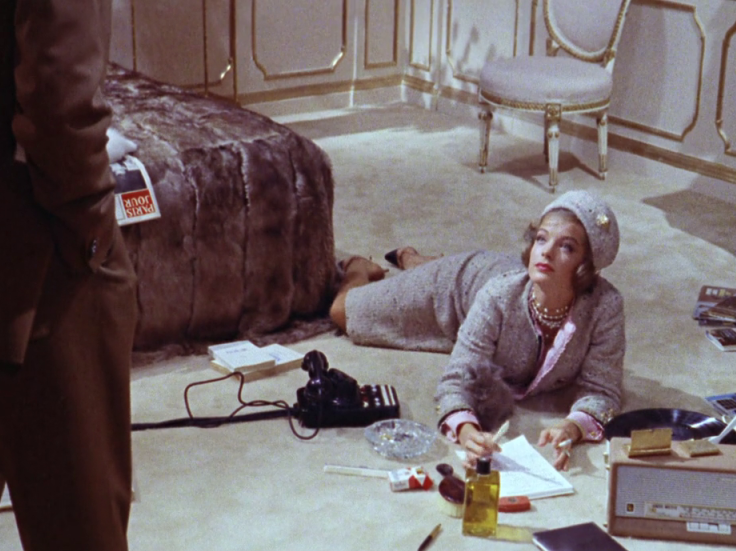
Il lavoro was Luchino Visconti’s part of BOCCACIO ‘70 (1962), in which four legendary Italian directors (Vittoria De Sica, Federico Fellini, Mario Monicelli and Visconti) each contributed a short film on the subject of love.
EN
“I really like the Il lavoro episode in Boccaccio ’70. I think of it as a sketch of the character of a modern woman, like many that I know, above all in Milanese society: a modern woman who places great importance on money, luxury, cars, a box at the Scala, and all these kinds of things, and does not really care about the truly important things in life. I have been admonished for the emotional moment that she goes through at the end. I think it is consistent with the character. The moment in which she feels almost offended by the fact that her husband pays her is like a moment of pity for herself, and not for the more general situation, which she doesn’t understand at all. It’s like the characters in Chekhov’s The Cherry Orchard; they allow the garden and the cherry trees to be sold without realising that the sale represents ruin – the ruin of a milieu and a society, and not simply of one character. In short, it is the playful moral vendetta of a loving young wife betrayed by her husband’s costly expenditure on ‘shares on the sexual stock exchange’. The rooms, the grey velvet couches, the authentic 18th-century French library in oak, the abstract paintings by Domietta Hercolani, everything that Rotunno’s camera captures represents the world in which the characters live. It is a cold and precious world, lacking the soul that Tomas Milian and Romy Schneider search for but never manage to obtain.
Luchino Visconti1
- 1Luchino Visconti, “Il lavoro,” Filmcritica, no. 159-160, August-September 1965.
NL
“Wat Visconti aan de ambitieuze, jonge actrice wil beproeven is een nieuwe seksuele en affectieve economie: de vrouw niet langer als genereuze innerlijkheid, als pure empathie en zichtbare gevoeligheid, klaar om steeds weer triomfantelijk onbegrepen te zijn onder het oog van het al te begrijpende en meelevende publiek. In Il lavoro is dat begrip van de kijker veel dubbelzinniger, is het publiek te verward om helder sympathie te voelen. Valoriseert de betaalde echtelijke seks de vrouwelijkheid?
Visconti speelt tegelijk de kaart van de afstandelijke analyse en die van de melodramatische identificatie. De film is tegelijk een onderzoek (zoals Vivre sa vie van Godard, met Karina) en een aria (à la Magnani, in La voce umana van Rossellini). Zo ontstaat er rond de actrice Schneider tegelijk leegte en volheid. De toeschouwer kan niet langer volstaan fan te zijn van de charmante jonge actrice, hij moet haar frontaal in de ogen kijken en zo zijn eigen sentimentele droombeeld loslaten. Maar de actrice groeit erdoor: het keurslijf van het droombeeld wordt weggebeitst, het Sissi-personage beschermt de actrice niet langer. In Il lavoro verschijnt Schneider voor het eerst helemaal alleen op het scherm, niet langer gedragen door Sissi, maar bedreigd door Pupé.”
Dirk Lauwaert1
- 1Dirk Lauwaert, “Kijk zonder mouwen! Chanel, Visconti en Romy Schneider ‘aan het werk’,” De Witte Raaf 114, maart-april 2005.




